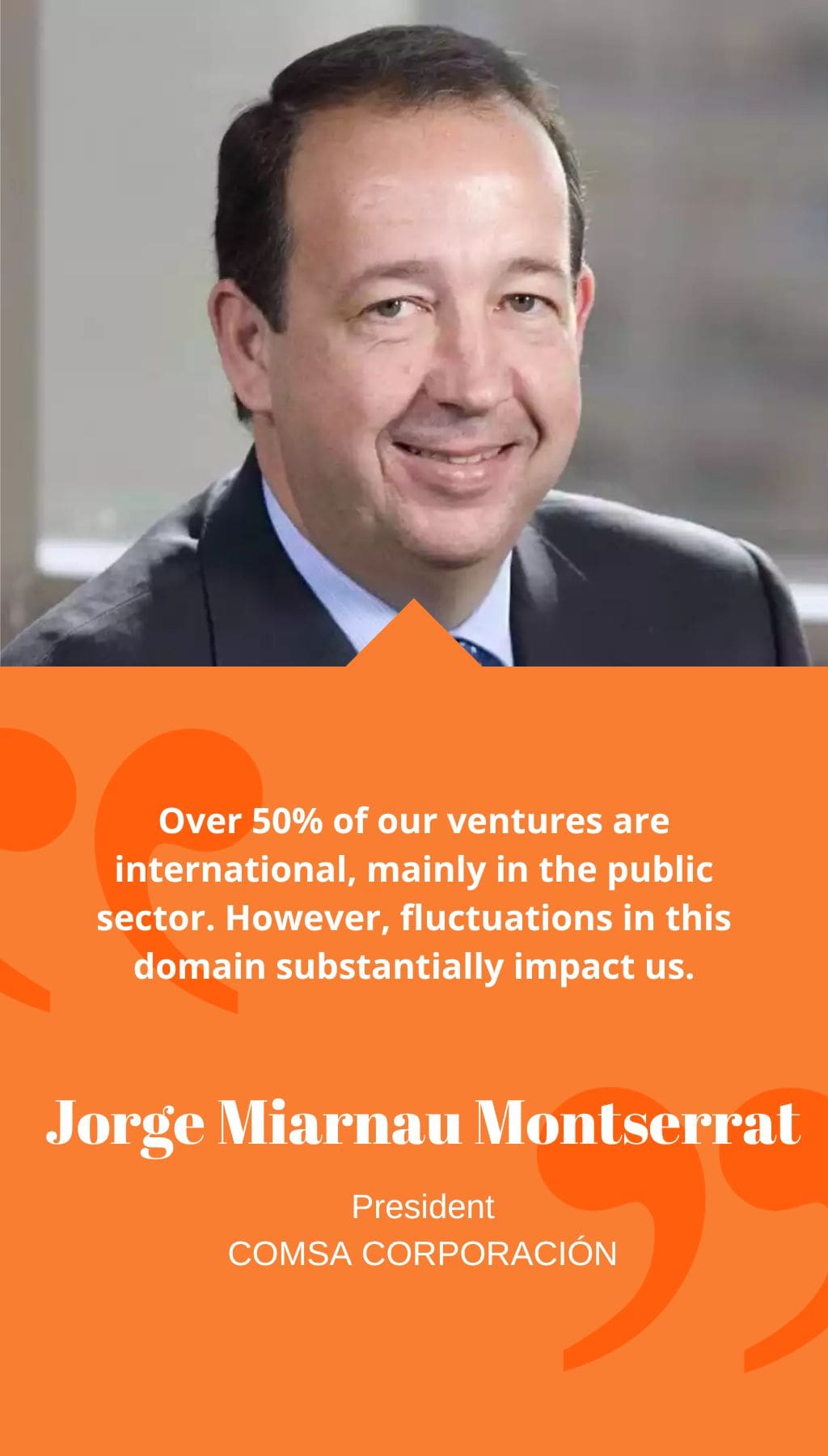
- Spain | 8 September 2021

Can you walk us through the history of COMSA Corporación, especially in light of its 128th anniversary?
Our roots trace back to the Spanish Civil War era. In 1936, my grandfather revitalized our presence in the railway industry from scratch. The ’60s marked a significant expansion—diversifying into roads, buildings, ports, airports, and beyond, evolving into a global construction entity while retaining our railway expertise. By the ’80s, our international journey commenced in Portugal, followed by South America. Post-2008 crisis, a merger with an industrial engineering firm shifted our focus abroad. Today, we majorly operate in infrastructure, industrial engineering, and maintenance across 20+ countries, emphasizing our railway heritage. Predominantly, Brazil, Colombia, and Mexico constitute our primary markets. Over 50% of our ventures are international, mainly in the public sector. However, fluctuations in this domain substantially impact us.
Your 2021 forecast suggests a profit rise to EUR1.299 million. What strategies foster this growth?
Sustained growth aligns with concentrating on core businesses and securing competent personnel for long-term success. We’re fortifying for the future by embracing younger talents and preparing for digital transformations. Spain’s market alone doesn’t suffice for railway works, prompting global outreach. Our strategy focuses on South America and northern Europe, particularly Poland, enabling operations in Croatia, Romania, and Bulgaria. Simultaneously, we’re engaged in stable yet evolving markets like Denmark and Sweden.
How is COMSA progressing with its digital transformation?
Office processes are digitally streamlined, minimizing paper use and relying on computer-driven systems. While digitalizing steel and concrete aspects of construction remains challenging, we’re emphasizing digital tools for planning and project management.
Barcelona is evolving as a logistics hub. What factors contribute to its prominence?
Geographically, Barcelona’s proximity to Europe is advantageous. The city’s allure coupled with innovative projects like The Collider and Pier01 attracts a burgeoning population, particularly young professionals. The city’s transportation infrastructure—airport, harbor, and railways—possess tremendous potential.
How do public administrations factor into Barcelona’s growth?
Post-crisis, governments worldwide have curbed public spending. Infrastructure often bears the brunt of these cuts. However, infrastructure isn’t just about commerce; it significantly impacts social and medical realms, influencing the construction of hospitals and schools. More investment in this sector is imperative.
What’s COMSA’s primary goal for 2022?
Our aim is to solidify our position with robust projects and steady growth, targeting nearly 5% expansion. Innovation and sustainability are pivotal values to attract younger talent and will remain integral to our ethos.














